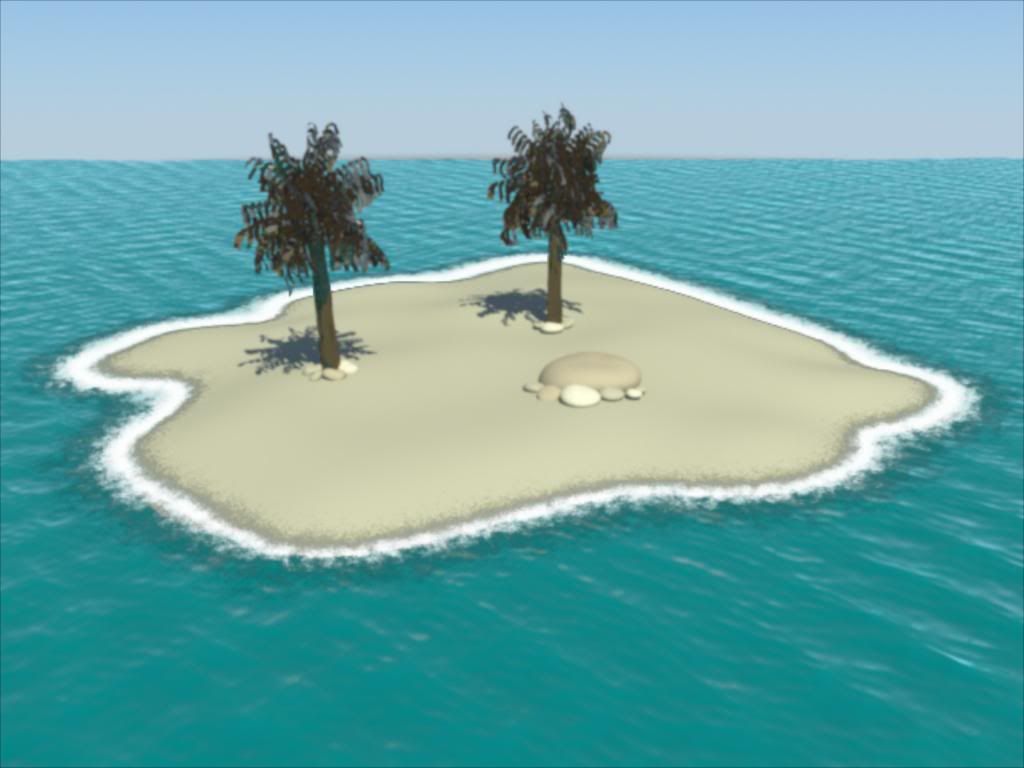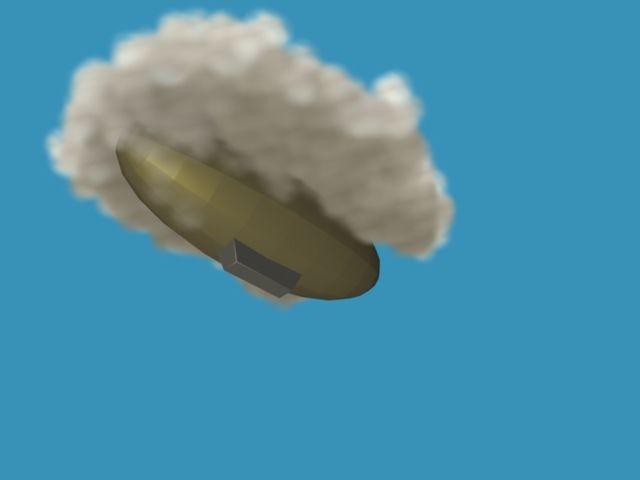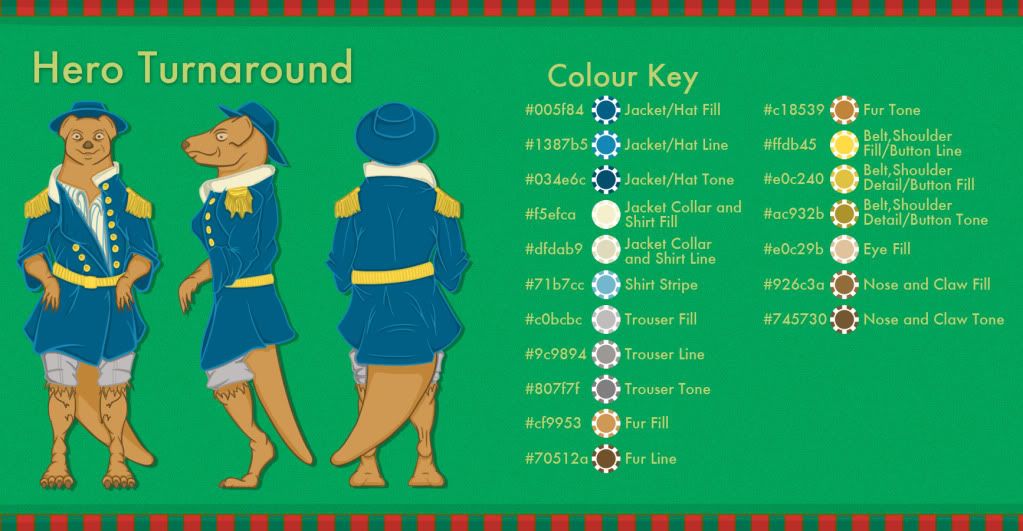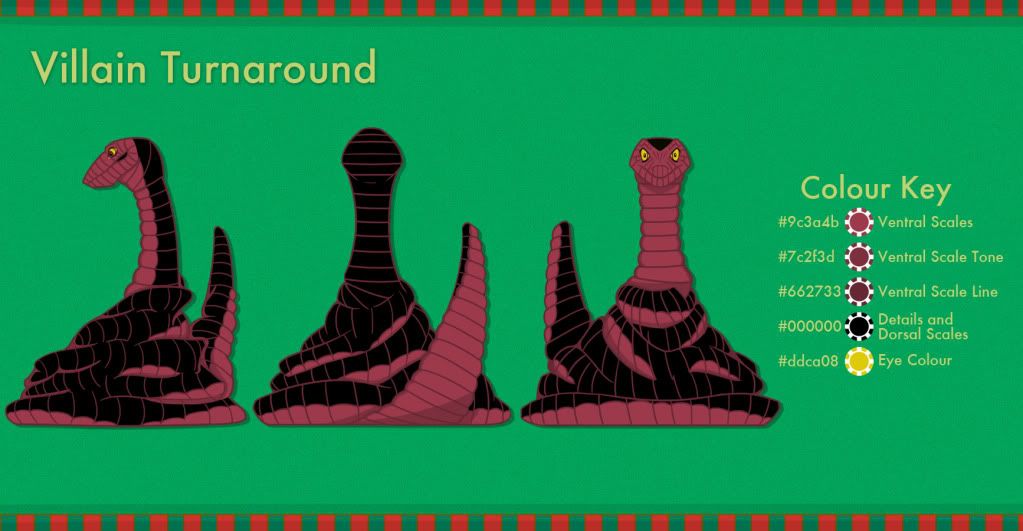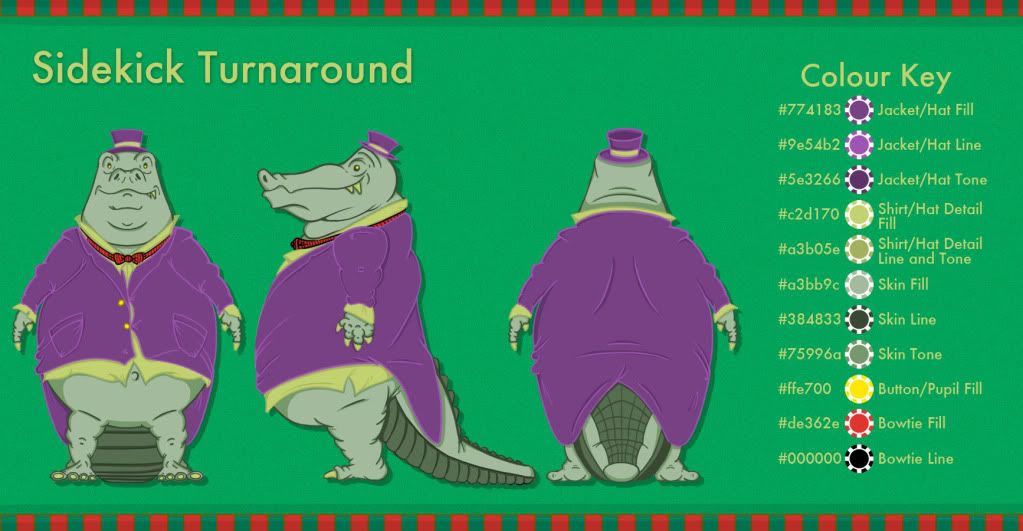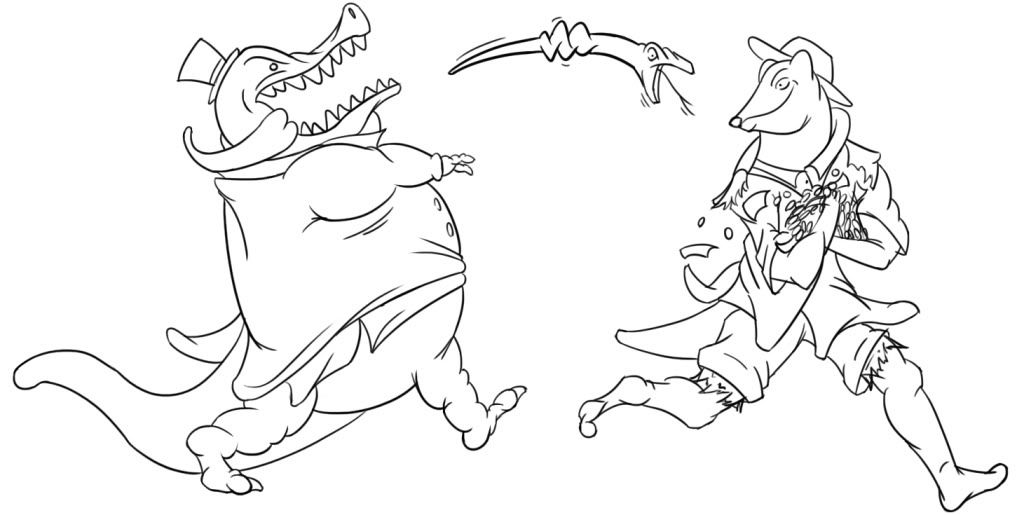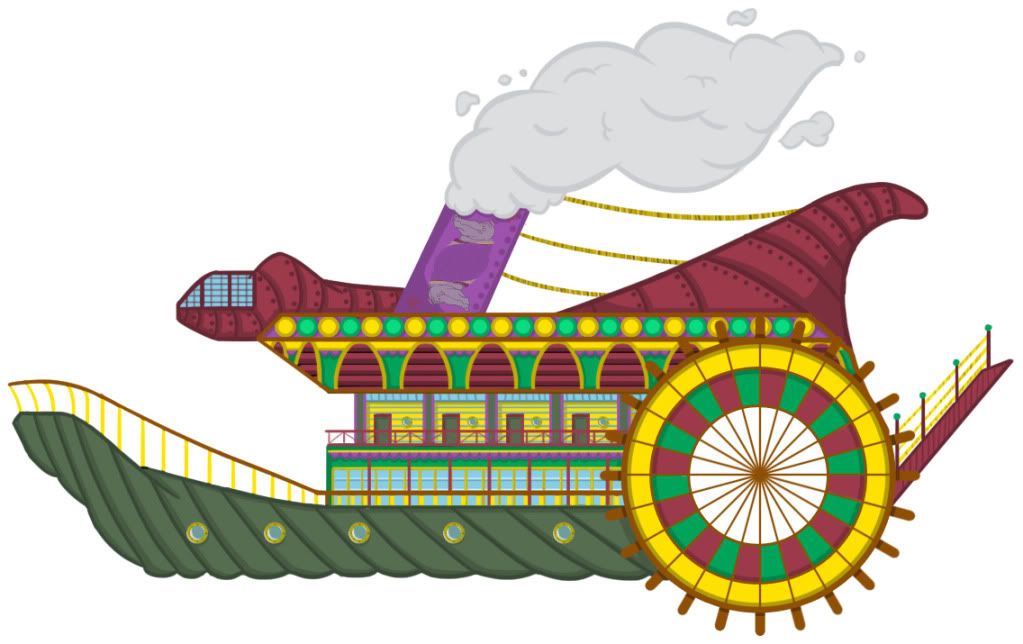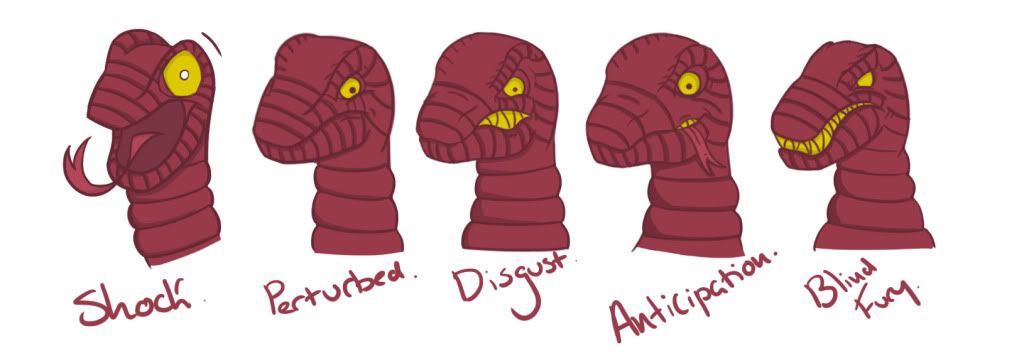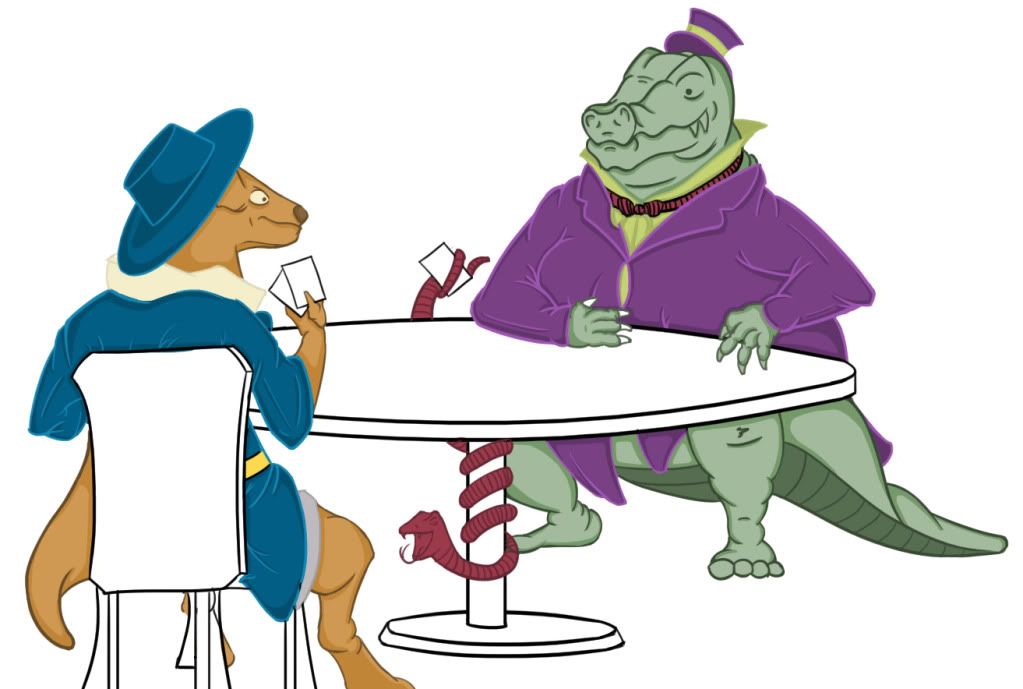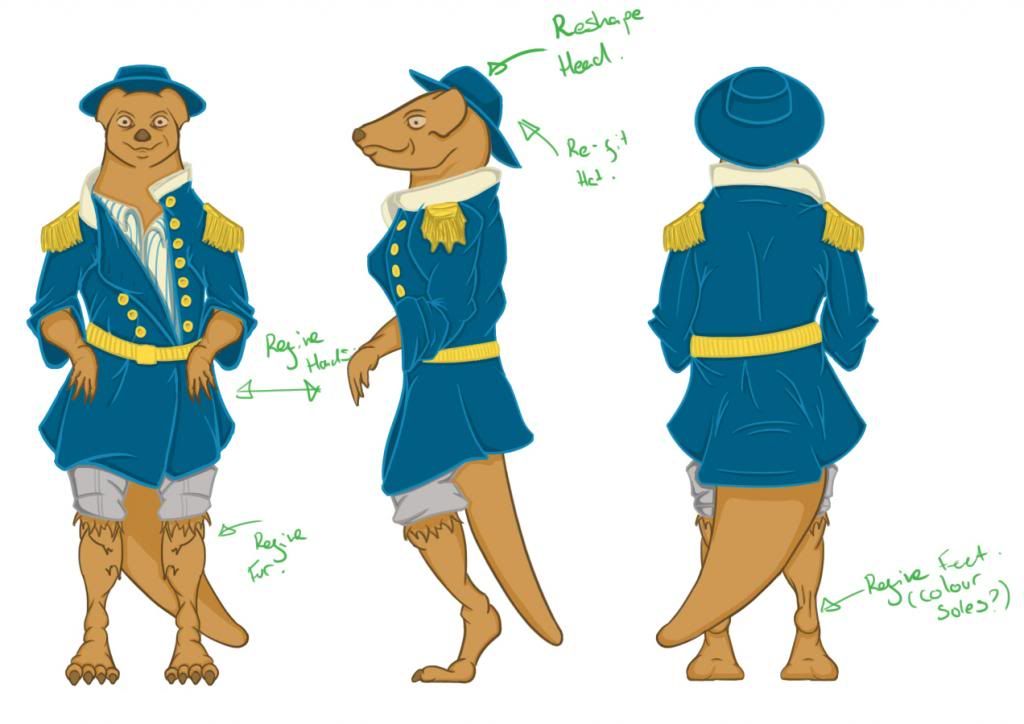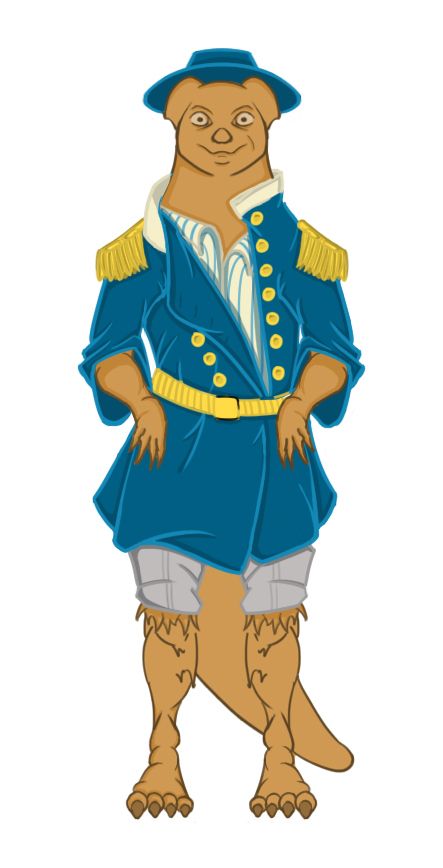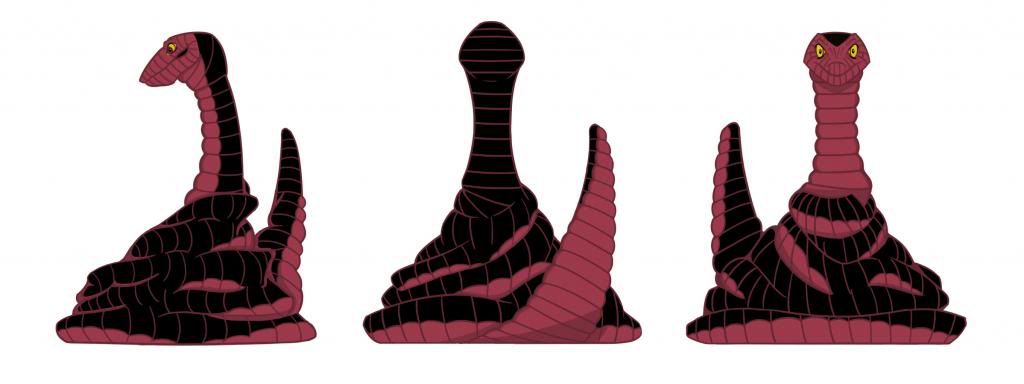Wednesday, 30 January 2013
Monday, 28 January 2013
Adaptation: Graph Conveyor Belt Concept Art
Graph Conveyor Belt Concept Art
This is a piece of concept art I created in response to one of the ideas Phil and I discussed. We spoke about treating elements associated with consumerism, such as statistical graphs, as other elements in the mass production process. This particular image displays a non-descript statistical graph as if it were a conveyor belt on a production line. The style was heavily influenced by the Sprite advertisement below. The entire animation will not necessarily be in this style, but if I choose to incorporate this idea as a repeating part of the montage, it will retain this style.
Thursday, 24 January 2013
Maya Tutorials: Dynamics One- Particles, Emitters and Forces
Dynamics One: Particles, Emitters and Forces
Directional Emitter: Explosion
Omni Emitter: Fuse
Volume Emitter: Smoke
Curve Emitter: Fireworks One
Curve Emitter: Shockwave
Curve Emitter: Foam
Curve Flow: Motion Path Dynamics
Emit from Particles: Fireworks Two
Wednesday, 23 January 2013
Monday, 21 January 2013
Adaptation: Idea Development 21/1/13
Restricting the Project (For the Greater Good)
At last thursdays tutorial, Alan and I discussed the ways in which I could develop and produce my music video. The most significant point that was reached was that in order to make the video both visually appealing and economical in terms of workload, I will need to restrict the video in a creative way.
Restriction makes it sound as if it is a negative thing, although if it works, it should be quite the opposite. The restriction will hopefully force the outcome in a more interesting and unique direction, stopping me from drifting into familiar territory. The restriction could be anything, really. As Alan suggested, it could be something as small as fixing a camera at a singular angle, such as side on to the action, or something more drastically noticeable, such as a total style restriction.
After the tutorial, I began to think of all the different ways I could creatively restrict the video.
Developing a Suitable Aesthetic
When thinking about restrictions, Alan and I discussed the various visual motifs and stylistic choices available to me, such as taking a graphic design approach, using album covers or title sequences from classic films as influence. The graphic design approach led to the idea of incorporating advertisements into the video, as well as advertising and consumerism as a concept.
This appears to fit well for a number of reasons. Firstly, the concept of advertising and consumerism relates quite closely to the themes of the restrictions in living and illusions of choice that were already present in the overall concept for the video. Secondly, advertising and marketing played quite a big part on the lifestyles of the average 1960's individual (just look at Mad Men), and the commercial art at the time was deliberately striking, with rich colours and strong text. I've already began to look at the work of artists such as Norman Rockwell and J.C. Leyendecker, and the semi-realism and bold colour schemes can be applied to both 3D and 2D elements in the video.
Arriving At a Logical Idea
After arriving at the above ideas, it got to that point where I actually had to make something from it.
I approached Phil with an idea I had developed and we discussed how I could make an interesting music video from what I had in mind.
Still retaining the marionette ideas from before, I came up with the idea of following this character through his daily routine, with the video intermittently pausing when he interacted with objects and products throughout the day. The camera would freeze as the shot transformed into an advertisement for the product or activity that was occurring, with bold text appearing to resemble printed magazine advertisements. Phil suggested that whilst it was an interesting concept, after seeing that happen three or four times, the audience would get the trick and it would lose its appeal fairly quickly. We discussed what it was that makes a music video different to an animation that loosely relates to, but is ultimately detached from, the music. We concluded that is was their use of montage editing, with hours of footage being filmed and then harvested in the editing suite afterwards. The video could cut between these shots of advertising in reality and various other scenes, such as rhythmic stylised shots of conveyor belts, moving to the beat of the music, for example. Although I will not be filming the footage live action, I can emulate the editing techniques to a degree, setting up my scenes as I normally would, then adding a series of cameras from various angles and playblasting from each view. I can then cut these playblasts together in Premiere Pro as Pre-Viz footage and once I have achieved the style I am going for, render only the cameras used and drop the rendered footage into place. Simples!
To keep the video dynamic and interesting, Phil suggested developing several scenarios that can be animated, rendered and intertwined between each other in the video, having multiple 'narratives' running simultaneously.
As for the tone, my initial ideas were pretty stale in terms of the emotion I intended to conjure up in the viewer. My more recent ideas of consumerism appeared to come off rather sinister, so the video may transition from a neutral, cheery tone to a more controlling and seedy one, with the character becoming a puppet of consumerism over the period of the video, as opposed to simply being a puppet to begin with.
Still retaining the marionette ideas from before, I came up with the idea of following this character through his daily routine, with the video intermittently pausing when he interacted with objects and products throughout the day. The camera would freeze as the shot transformed into an advertisement for the product or activity that was occurring, with bold text appearing to resemble printed magazine advertisements. Phil suggested that whilst it was an interesting concept, after seeing that happen three or four times, the audience would get the trick and it would lose its appeal fairly quickly. We discussed what it was that makes a music video different to an animation that loosely relates to, but is ultimately detached from, the music. We concluded that is was their use of montage editing, with hours of footage being filmed and then harvested in the editing suite afterwards. The video could cut between these shots of advertising in reality and various other scenes, such as rhythmic stylised shots of conveyor belts, moving to the beat of the music, for example. Although I will not be filming the footage live action, I can emulate the editing techniques to a degree, setting up my scenes as I normally would, then adding a series of cameras from various angles and playblasting from each view. I can then cut these playblasts together in Premiere Pro as Pre-Viz footage and once I have achieved the style I am going for, render only the cameras used and drop the rendered footage into place. Simples!
To keep the video dynamic and interesting, Phil suggested developing several scenarios that can be animated, rendered and intertwined between each other in the video, having multiple 'narratives' running simultaneously.
As for the tone, my initial ideas were pretty stale in terms of the emotion I intended to conjure up in the viewer. My more recent ideas of consumerism appeared to come off rather sinister, so the video may transition from a neutral, cheery tone to a more controlling and seedy one, with the character becoming a puppet of consumerism over the period of the video, as opposed to simply being a puppet to begin with.
Whilst this all still very convoluted and messy at this stage, I feel as though I am making progress and it appears to be taking shape, little by little.
Thursday, 17 January 2013
Wednesday, 16 January 2013
Adaptation: Song Decisions and Initial Ideas
Song Decisions and Initial Ideas
Since our briefing, I've spent the majority of my time trying to settle on the song I wish to create a video for. I consciously forced myself not to rush into it for the sake of getting things done, but after almost a week, I think I have boiled it down to a couple of tracks I wish to use, with the final song being chosen in favour of the better idea associated with it. Firstly though, I'll go through the short list of songs I have considered along the way, as well as the ideas associated with them.
Dismissed for two reasons. One, I couldn't settle on a single track, as they all resonate with me, and two, the majority of the tracks on the album are pushing the five minute mark and ideally I don't want to exceed three and a half minutes at most
Everybody's Gotta Learn Sometime Beck
This song resonates strongly with me, although I couldn't develop an idea without harking back to thoughts of Eternal Sunshine of the Spotless Mind, in which this song is featured.
With Beck, there are a number of songs I would like to adapt into a music video, simply because his trademark lyrical and musical style is deliberately nonsensical. This is appealing to me, as it would stretch my imagination when attempting to interpret the music, but I can't think of a way of doing this without it developing into an abstract mess of nonsense that relates very little to the music (unless of course, I made it deliberately strange and obscure to reflect the nature of the song, but this feels like a bit of a cheap way of getting around a problem)
Lights in the Sky Nine Inch Nails
Ultimately an interpretation of the lyrics. They provided very striking mental imagery for me, but that's where it ended. I didn't have enough of an emotional affinity with the track to pursue it further
Right Where It Belongs Nine Inch Nails
Much the same reason as I had for Lights in the Sky
Lullaby The Cure
I love the imagery that this song conjures up, although my initial thoughts were quite literal. This proved to be a problem as the original music video is an incredibly literal interpretation of the lyrics, which stifled the idea for me and ultimately put me off of developing it further
Just Like Heaven The Cure
I just couldn't come up with anything that was as striking as the original video
Pictures of You The Cure
It's an incredibly long song and cutting it down to a reasonable length somewhat kills the impact it had on me in the first place, so it was dismissed
The Killing Moon Nouvelle Vague
My main idea for this track told the story of a man who had a curious infatuation with the moon and its enigmatic nature. The man goes out to sea as the moon is rising at dusk, trying to get closer to it. He struggles against storms, sea creatures and illness, with the moon gradually rising as the night goes on. Eventually, he glances over the edge of the boat to catch the reflection of the moon in the water. Exhausted, dehydrated and delirious, he reaches out to touch it, convinced it is the real thing. The boat tips and he plummets into the water, where he eventually drowns. Immediately after, in the distance, another boat leaves the harbour, where the cycle will begin again. Defining the nature of The Killing Moon.
Fly Me to the Moon Julie London
Just a quirky, enjoyable song that evokes images of sixties class and swing. Not a real idea here...
Windmills of Your Mind Noel Harrison
Mainly considered because of the evocative, somewhat nonsensical lyrics. Although I couldn't get past the thought of simply visualising the lyrics, and I'd rather make a video that was a little more abstract in its nature
Me and Julio Down by the Schoolyard Paul Simon
This was an option I landed on over Christmas, so it has been developed loosely, but I'm not overly convinced I can do something interesting with it yet. I enjoy the song and the story it tells. It's a very charming song and so I attempted to develop an idea that had an equal amount of charm. I came up with a couple of different ways of approaching this idea.
1. The story told from the perspective of the child in the song, so I've translated that over to the idea. The child uses toys and puppets to tell the tale in a series of homemade dioramas, ranging from the prison cell to the schoolyard, all created in a ramshackle, childlike way, using cardboard boxes, egg cartons and stationary. The child's hands would be visible, manipulating the toys, as he is sat behind the dioramas
2. The child is fixed, central in the camera, as the setting around him changes and shifts in response to what is happening in the song, e.g. in the police station. he'd be behind bars etc then his mother and father move into shot, scene changes, boy in same position but surrounding area different. The video stays in this format for the entire song
Making Plans for Nigel Nouvelle Vague
This is by far my most developed and resolved concept, although it is still far from being realised effectively. The idea has been fuelled by various influences merged together, as opposed to just the song alone (I picked up on this way of thinking whilst watching an interview with Mark Romanek, and how he drew influence from various unrelated things such as lighting at fashion shows and Polaroids he had viewed)
When listening to this song, I interpreted themes along the lines of:
1. A small wooden man is lying in bed, his eyes blink as he begins to wake. He rises to his feet, where it is revealed he is a puppet being controlled by an unseen puppeteer. He meanders through mundane tasks, from preparing breakfast to reading the newspaper. As the day progresses, one by one, his strings are cut by various elements of his world, from sharp objects to small flames etc. This causes him to gradually lose control of his own being, one limb at a time, as he is under the control of another, so he doesn't know how to function without the strings holding him up. Eventually, he falls into a heap as the final string is cut. The camera holds focus on the heaped puppet, as he lies there still. The video ends with him gaining control of his hands and arms, as he begins to rise without the strings.
The visual influence I had in my head for this concept were predominantly stop motion animations, notably, the work of Jan Švankmajer and the Brothers Quay. I had this image of a worn wooden marionette, constructed part artists marionette, part nutcracker, lacquered with chipped resin and brooding, dark varnish, much like that of a ventriloquists dummy. The environment would be constructed of what appears to be found materials, such as driftwood, household items and miscellaneous tchotchkes, set up to represent scale objects in this marionettes world (much like that of the Borrowers). There would also be flashes of the world outside of the diorama, glimpses of the puppeteer through cracks in the set, the puppet awoken by an alarm clock positioned by his window etc.
2. The story is much the same as above, but the approach in style is radically different. Taking a considerable influence from my childhood love of Thunderbirds and Captain Scarlet, the marionette would be more human in its appearance, much like Gerry Anderson's Supermarionation. The song has a very 1960s vibe about it, thanks to Nouvelle Vague's bossa nova-style arrangements, which led me to the idea of using Gerry Anderson's style to interpret the music. This idea also led me to the idea of using snippets of live action footage interspliced in select segments of the video, as it was common in Supermarionation that a marionette's eyes, mouth or hands would be substituted for those of a live actor for close-up shots. The environment could either be an homage to Anderson's 1960's, googie aesthetic or in a setting that completely contrasts the marionette, reinforcing the themes of restricted or conflicted life choices, such as a marionette in a business suit residing in a slum.
I've had quite a few ideas, although they're all just flashes of influence from all over the place, as opposed to a cemented concept, but hopefully after Thursday's tutorial, the path will be made a little clearer.
Since our briefing, I've spent the majority of my time trying to settle on the song I wish to create a video for. I consciously forced myself not to rush into it for the sake of getting things done, but after almost a week, I think I have boiled it down to a couple of tracks I wish to use, with the final song being chosen in favour of the better idea associated with it. Firstly though, I'll go through the short list of songs I have considered along the way, as well as the ideas associated with them.
Song Shortlist
A Number of Tracks from Sea Change BeckDismissed for two reasons. One, I couldn't settle on a single track, as they all resonate with me, and two, the majority of the tracks on the album are pushing the five minute mark and ideally I don't want to exceed three and a half minutes at most
Everybody's Gotta Learn Sometime Beck
This song resonates strongly with me, although I couldn't develop an idea without harking back to thoughts of Eternal Sunshine of the Spotless Mind, in which this song is featured.
With Beck, there are a number of songs I would like to adapt into a music video, simply because his trademark lyrical and musical style is deliberately nonsensical. This is appealing to me, as it would stretch my imagination when attempting to interpret the music, but I can't think of a way of doing this without it developing into an abstract mess of nonsense that relates very little to the music (unless of course, I made it deliberately strange and obscure to reflect the nature of the song, but this feels like a bit of a cheap way of getting around a problem)
Lights in the Sky Nine Inch Nails
Ultimately an interpretation of the lyrics. They provided very striking mental imagery for me, but that's where it ended. I didn't have enough of an emotional affinity with the track to pursue it further
Right Where It Belongs Nine Inch Nails
Much the same reason as I had for Lights in the Sky
Lullaby The Cure
I love the imagery that this song conjures up, although my initial thoughts were quite literal. This proved to be a problem as the original music video is an incredibly literal interpretation of the lyrics, which stifled the idea for me and ultimately put me off of developing it further
Just Like Heaven The Cure
I just couldn't come up with anything that was as striking as the original video
Pictures of You The Cure
It's an incredibly long song and cutting it down to a reasonable length somewhat kills the impact it had on me in the first place, so it was dismissed
The Killing Moon Nouvelle Vague
My main idea for this track told the story of a man who had a curious infatuation with the moon and its enigmatic nature. The man goes out to sea as the moon is rising at dusk, trying to get closer to it. He struggles against storms, sea creatures and illness, with the moon gradually rising as the night goes on. Eventually, he glances over the edge of the boat to catch the reflection of the moon in the water. Exhausted, dehydrated and delirious, he reaches out to touch it, convinced it is the real thing. The boat tips and he plummets into the water, where he eventually drowns. Immediately after, in the distance, another boat leaves the harbour, where the cycle will begin again. Defining the nature of The Killing Moon.
Fly Me to the Moon Julie London
Just a quirky, enjoyable song that evokes images of sixties class and swing. Not a real idea here...
Windmills of Your Mind Noel Harrison
Mainly considered because of the evocative, somewhat nonsensical lyrics. Although I couldn't get past the thought of simply visualising the lyrics, and I'd rather make a video that was a little more abstract in its nature
Me and Julio Down by the Schoolyard Paul Simon
This was an option I landed on over Christmas, so it has been developed loosely, but I'm not overly convinced I can do something interesting with it yet. I enjoy the song and the story it tells. It's a very charming song and so I attempted to develop an idea that had an equal amount of charm. I came up with a couple of different ways of approaching this idea.
1. The story told from the perspective of the child in the song, so I've translated that over to the idea. The child uses toys and puppets to tell the tale in a series of homemade dioramas, ranging from the prison cell to the schoolyard, all created in a ramshackle, childlike way, using cardboard boxes, egg cartons and stationary. The child's hands would be visible, manipulating the toys, as he is sat behind the dioramas
2. The child is fixed, central in the camera, as the setting around him changes and shifts in response to what is happening in the song, e.g. in the police station. he'd be behind bars etc then his mother and father move into shot, scene changes, boy in same position but surrounding area different. The video stays in this format for the entire song
Making Plans for Nigel Nouvelle Vague
This is by far my most developed and resolved concept, although it is still far from being realised effectively. The idea has been fuelled by various influences merged together, as opposed to just the song alone (I picked up on this way of thinking whilst watching an interview with Mark Romanek, and how he drew influence from various unrelated things such as lighting at fashion shows and Polaroids he had viewed)
When listening to this song, I interpreted themes along the lines of:
- A life led through the guidance and suggestion of others
- Being spoken for and masking of emotions ("if your Nigel says he's happy, he must be happy")
- Having decisions made for you
- Ultimately restricted in your life choices
- Restricted unintentionally by those who only want what is best for you
- Disrespect through mollycoddling
- Treated as a puppet, every action you take and every decision you make is the choice of somebody pulling your strings
- Negativity as a result of intended positivity. Good intentions ultimately leading to a bad outcome
- What would happen if the metaphorical strings were cut, one by one, leaving the puppet to run their own life
- Sudden independence
1. A small wooden man is lying in bed, his eyes blink as he begins to wake. He rises to his feet, where it is revealed he is a puppet being controlled by an unseen puppeteer. He meanders through mundane tasks, from preparing breakfast to reading the newspaper. As the day progresses, one by one, his strings are cut by various elements of his world, from sharp objects to small flames etc. This causes him to gradually lose control of his own being, one limb at a time, as he is under the control of another, so he doesn't know how to function without the strings holding him up. Eventually, he falls into a heap as the final string is cut. The camera holds focus on the heaped puppet, as he lies there still. The video ends with him gaining control of his hands and arms, as he begins to rise without the strings.
The visual influence I had in my head for this concept were predominantly stop motion animations, notably, the work of Jan Švankmajer and the Brothers Quay. I had this image of a worn wooden marionette, constructed part artists marionette, part nutcracker, lacquered with chipped resin and brooding, dark varnish, much like that of a ventriloquists dummy. The environment would be constructed of what appears to be found materials, such as driftwood, household items and miscellaneous tchotchkes, set up to represent scale objects in this marionettes world (much like that of the Borrowers). There would also be flashes of the world outside of the diorama, glimpses of the puppeteer through cracks in the set, the puppet awoken by an alarm clock positioned by his window etc.
2. The story is much the same as above, but the approach in style is radically different. Taking a considerable influence from my childhood love of Thunderbirds and Captain Scarlet, the marionette would be more human in its appearance, much like Gerry Anderson's Supermarionation. The song has a very 1960s vibe about it, thanks to Nouvelle Vague's bossa nova-style arrangements, which led me to the idea of using Gerry Anderson's style to interpret the music. This idea also led me to the idea of using snippets of live action footage interspliced in select segments of the video, as it was common in Supermarionation that a marionette's eyes, mouth or hands would be substituted for those of a live actor for close-up shots. The environment could either be an homage to Anderson's 1960's, googie aesthetic or in a setting that completely contrasts the marionette, reinforcing the themes of restricted or conflicted life choices, such as a marionette in a business suit residing in a slum.
I've had quite a few ideas, although they're all just flashes of influence from all over the place, as opposed to a cemented concept, but hopefully after Thursday's tutorial, the path will be made a little clearer.
Sunday, 13 January 2013
Adaptation: Director Analysis- Mark Romanek
Director Analysis Mark Romanek
I'm beginning my project with a series of posts analysing the work and creative processes of various music video directors whose work I admire and take inspiration from. I will be investigating the ways in which they tackle the creative challenges associated with visualizing a piece of music, taking notice of their influences, their attitude towards to the process and the quirks, traits and trademarks that make their work so unique and suited to the source material. I will not only be analysing their videos, but also listening to the comments made by the director's and the musicians found in various audio commentaries, reading and viewing interviews and investigating the ways in which their work has influenced both the world of music and filmmaking through articles and documentaries.
The series begins with Mark Romanek, an American filmmaker who began making music videos in 1986, rising to prominence with the release of his video for Lenny Kravitz', Are You Gonna Go My Way?, now considered a landmark in music video production, with its iconic art direction inspiring many other directors during the 1990s.
Next in the series, I will be looking at the work and creative processes of French director, Stéphane Sednaoui.
I'm beginning my project with a series of posts analysing the work and creative processes of various music video directors whose work I admire and take inspiration from. I will be investigating the ways in which they tackle the creative challenges associated with visualizing a piece of music, taking notice of their influences, their attitude towards to the process and the quirks, traits and trademarks that make their work so unique and suited to the source material. I will not only be analysing their videos, but also listening to the comments made by the director's and the musicians found in various audio commentaries, reading and viewing interviews and investigating the ways in which their work has influenced both the world of music and filmmaking through articles and documentaries.
The series begins with Mark Romanek, an American filmmaker who began making music videos in 1986, rising to prominence with the release of his video for Lenny Kravitz', Are You Gonna Go My Way?, now considered a landmark in music video production, with its iconic art direction inspiring many other directors during the 1990s.
Video Analysis
I spent the evening watching and taking notes from around fifteen different Romanek directed videos, as well as listening to the corresponding commentaries from both Romanek and the artists. This is just a small selection of some of the more striking videos I viewed (click the titles to view the videos).
99 Problems- Jay Z
This was Romanek's first real rap video. It is shot in a way that glorifies the source material, "shooting the ghetto like art" and "capturing the beauty of the soulful side of Brooklyn". It takes its defining influence from war reportage photography, such as the work of Lee Miller. It is incredibly self aware and this leads to it being somewhat tongue-in-cheek in its nature. The film speed is constantly changing, as if it were being shot using a hand-crank camera, although the cuts suggest that it was more likely to be two separate cameras shooting at alternate frame rates and then edited to compliment each other visually. Romanek stated that he went through several editors to get the right cut, showing that the intended effect is often a case of trial and error.
Faint- Linkin Park
The camera positioned behind the artists is an unusual choice, as typically, the performers are deliberately put as the central point of focus. The set is lit by around 600 identical lamps (influenced by a fashion shoot by Alexander McQueen), giving this beautiful bokeh effect, which silhouettes the artists and the crowd. The implied anonymity of the artists plays on the theme of 'I won't be ignored' and the crescendo moment of the shot moving to a typical view of the front reinforces this. Refusing to show their faces engages the viewer, building tension and suspense, constantly asking the question.Can't Stop- Red Hot Chili Peppers
This video is incredibly carefree, or at least made to look that way. The immaturity is somewhat forced and constructed, being strongly inspired by the One Minute Sculptures by Erwin Wurm. Whilst it is made to look spontaneous, it isn't. Romanek had the idea in place before he had a band, so this video isn't typical in the sense that it isn't a reaction to the music or the artist, more a collected series of complimentary components. The combination of unusual scenarios and a kooky band in a sterile, stark environment amplifies their personality. Romanek's intentions were "to make it as uninteresting as we possibly can, and focus on the active nature of the actions, calling it "the most wonderfully meaningless video I've ever done"
The Perfect Drug- Nine Inch Nails
The song was written by Trent Reznor for David Lynch's Lost Highway, which led to Romanek expecting to have to include film footage in the video. Lynch encouraged them not to use footage, and so Romanek began working on what can be seen in the final video. The main visual influence was the work of Edward Gorey (writer of such stories as The Gashlycrumb Tinies). It feels as if it were one of those incredibly elaborate, staged photo shoots you find in fashion magazines, much like the work of photography David LaChapelle. It is incredibly vaudevillian and theatrical, with a combination of evocative set dressing and vivid editing. The story of the piece came from the fact that when a song repeats a certain word, theme or phrase (in this case The Perfect Drug), you cannot ignore it and you have to incorporate it into the story of the scene, otherwise it makes the song feel out of place and the video irrelevant.
A Summary of Romanek's Influence on Myself
Romanek's videos are spectacular, well constructed and tailored incredibly well to the music and the artists. Although, his videos may not be the best direct influence for my work, as the process in which they are created is very free and flexible (due to them being filmed photographically and having the ability to improvise on the spot). However, his creative influences and their diversity is a wonderful thing to take into account, as he literally uses everything he comes across in one way or another. A tiny, minuscule thought in response to something generic may play an important part in creating something iconic and spectacular. A lot of the time, he has a concept initially and finds and band or song that will fit comfortably with that idea, instead of tailoring a concept to fit the requirements of an existing track. This may be helpful when it comes to developing my video.
Thursday, 10 January 2013
Adaptation: Initial Thoughts and Visual Research
Adaptation: Initial Thoughts and Research
(I've linked to the following videos, as opposed to embedding them, as it should put less of a strain on the loading time of the page.)
With those hectic last few months out of the way, it's time to move on to what I imagine is going to be just as hectic (and considerably more terrifying). Whilst the idea of almost complete freedom is a little daunting and pretty overwhelming, I can't help but buzz with excitement.
Over the Christmas period, I spent any time I wasn't working bouncing thoughts of potential topics for Adaptation around my head. The general idea I found myself drifting back to was that of creating a music video.
I absolutely love music videos, and I admire the way in which, when desired, the director can tell as compelling a story you would find in a feature length film, in three minutes. I would go so far as to say I enjoy music videos more so than feature length films (I put that down to my short attention span, but I digress…).
Music videos can take all their influence from the song they are visualising, being incredibly literally about the tonality and lyrics, or they can be completely unrelated, acting as a set of compelling images to accompany the track, without bearing much of a connection. The majority of these examples are live action, but the principles within them translate over to CG too.
Period Evolution of Music Videos
The general style and production values of music videos has evolved considerably over time.
Sixties- Zou Bisou Bisou- Gillian Hills
Music videos in the sixties were extensions of musicals being shown in the cinemas at the time.
Seventies- Bohemian Rhapsody- Queen
As the music got bolder, as did the videos, with Bohemian Rhapsody being one of the first 'official' music videos to be produced as a means of promoting the music.
Eighties- Total Eclipse of the Heart- Bonnie Tyler
Videos in the eighties displayed high production values and excessive glamour, assisted with the inception of MTV.
Nineties- Coffee and TV- Blur
Music videos become less of a means of promotion, but more of a means of experimentation. Directors such as Michel Gondry and Chris Cunningham made their mark in this period, using the format to really push what it meant to make a music video, regardless of promoting the music it visualised.
Noughties- Hear It Goes Again- OK Go
Music videos now have reverted back to being sources of promotion with the advent of the viral marketing, being used as a means of creating buzz online. Its both enhanced and stunted the creativity found in music videos, with many videos being created not out of the desire to create something fantastic, but the desperation to get online views and exposure.
(I've linked to the following videos, as opposed to embedding them, as it should put less of a strain on the loading time of the page.)
Visual Style Examples
These are a few examples of the ways in which music videos have been created, other than live action.
Full 3D- Nine Inch Nails- Only
Graphical 3D- Remind Me- Royksopp
These are a few examples of the ways in which music videos have been created, other than live action.
Full 3D- Nine Inch Nails- Only
Graphical 3D- Remind Me- Royksopp
Context Examples
These are a few examples of the types of music video you can expect to find, each of them interesting and creative for different reasons.
Low Budget- Fell in Love with a Girl- White Stripes
In order to derive a jumping off point for my video, I've began to read interviews with various music video directors, as well as listening to commentary tracks for several videos. I aim to discover how established directors go about creating their videos, looking at their creative process and hopefully applying it to my own project.
In order to derive a jumping off point for my video, I've began to read interviews with various music video directors, as well as listening to commentary tracks for several videos. I aim to discover how established directors go about creating their videos, looking at their creative process and hopefully applying it to my own project.
Tuesday, 8 January 2013
Monday, 7 January 2013
Character Design: Action Shots- 'Get Him!' Progress
This is the line art for the second action shot, featuring all three characters. I'm fairly happy with how it is going so far, although certain parts need to be reconstructed. This shot may end up staying as line art only, as time constraints are restricting me from having the opportunity to add colour, although if all goes smoothly, I may have time after putting the character bible together to add colour to the scene (especially seeing as my illustrations don't really work without colour...).
Sunday, 6 January 2013
Character Design: Props- Steamboat Update
This is pretty much the final design for the Steamboat, unless I find anything drastically horrible with it that I feel I need to change.
Character Design: Props- The Snake's Cage
This is the Snake's Cage. The purpose of the Cage is to assist the Snake in it's cover as the pet of the Alligator, blending in as nothing of a threat. Although, the Snake is the brains behind the operation, and this is reflected in the design, as after all, if you've got to be stuck in a cage as a means of disguising yourself, you may as well make it as plush and comfortable as possible. It provides the character with a sense of grandeur and whilst the Snake can't be the centre of attention, its true villainous nature is revealed through the Cage's appearance.
Saturday, 5 January 2013
Character Design: Alligator Expression Sheet
Need I say more?
(The scribbled, caffeine-fuelled handwriting will be typed in the final presentation)
(The scribbled, caffeine-fuelled handwriting will be typed in the final presentation)
Character Design: Props- Steamboat Progress
This is the current appearance of the Snake and Alligator's Steamboat. Its spectacularly over the top to reflect both the Vegas-like purpose of the vehicle, as well as the 'fit for character' style you often see in cartoons such as He-Man (i.e. Castle Greyskull reflecting Skeletor).
Its about halfway there, with the rough colours and tone added. The finer details are to be added tomorrow.
As always, feedback please!
Its about halfway there, with the rough colours and tone added. The finer details are to be added tomorrow.
As always, feedback please!
Friday, 4 January 2013
Character Design: Action Shots- 'Playing Cards' Progress
The majority of the colour and tone has been added to the characters now. All that is left is to dress the scene and add colour and tone to the props (as well as making some minor corrections regarding the somewhat... broken construction of the characters' hands).
Character Design: Action Shots- 'Playing Cards' Progress
Just a quick progress update on the development of one of my action shots. This shows the Mongoose playing cards against the Alligator, whilst the true brains behind the operation, the Snake, sneaks cards to the Alligator from beneath the table.
As before, the messy bits are annotated as I've been going along, but as usual, I'm still in dire need of feedback! Critique, ho!
Thursday, 3 January 2013
Character Design: Hero Turnaround Progress Update
I'm getting closer to finishing the turnaround for my Hero character now. I still have a way to go, but it is more or less in the refinement stages now. I've been scribbling down notes as I go, deleting annotation as I change the character, and the bits that are left are the bits I've yet to alter. Of course, these are my own observations, and I'd appreciate it if I could get an outside perspective. So, once again, I am fishing for feedback!
Feedback please!!!
Feedback please!!!
Wednesday, 2 January 2013
Character Design: Hero Turnaround Progress
A quick update on the progress of my Hero character. This is only the front, and its not yet complete, but as usual, I felt it would be a good idea to grab some feedback before I set anything in stone. So, feedback please!
Tuesday, 1 January 2013
Character Design: Sidekick Progress
This is the sidekick character so far. I've began the rear view, but it was incomplete, so I have cropped it out of this preview for the moment. The character is not yet complete, but this is more or less how it will appear in the end.
I keep finding myself doubting the originality of this design, and I have been making an effort to try and tone down the generic nature, but I'm still a little stumped. So, I thought this is probably a good time to ask for some feedback and suggestions for how I can push this character a little bit out of the 'animal in people clothes' spectrum.
Feedback please!!!
I keep finding myself doubting the originality of this design, and I have been making an effort to try and tone down the generic nature, but I'm still a little stumped. So, I thought this is probably a good time to ask for some feedback and suggestions for how I can push this character a little bit out of the 'animal in people clothes' spectrum.
Feedback please!!!
Character Design: Final Villain Turnaround
This is the final turnaround for the Villain. The head shape has been altered slightly in response to feedback from Justin, and overall, I'm fairly happy with the design.
As always, feedback is appreciated.
As always, feedback is appreciated.
Subscribe to:
Posts (Atom)


